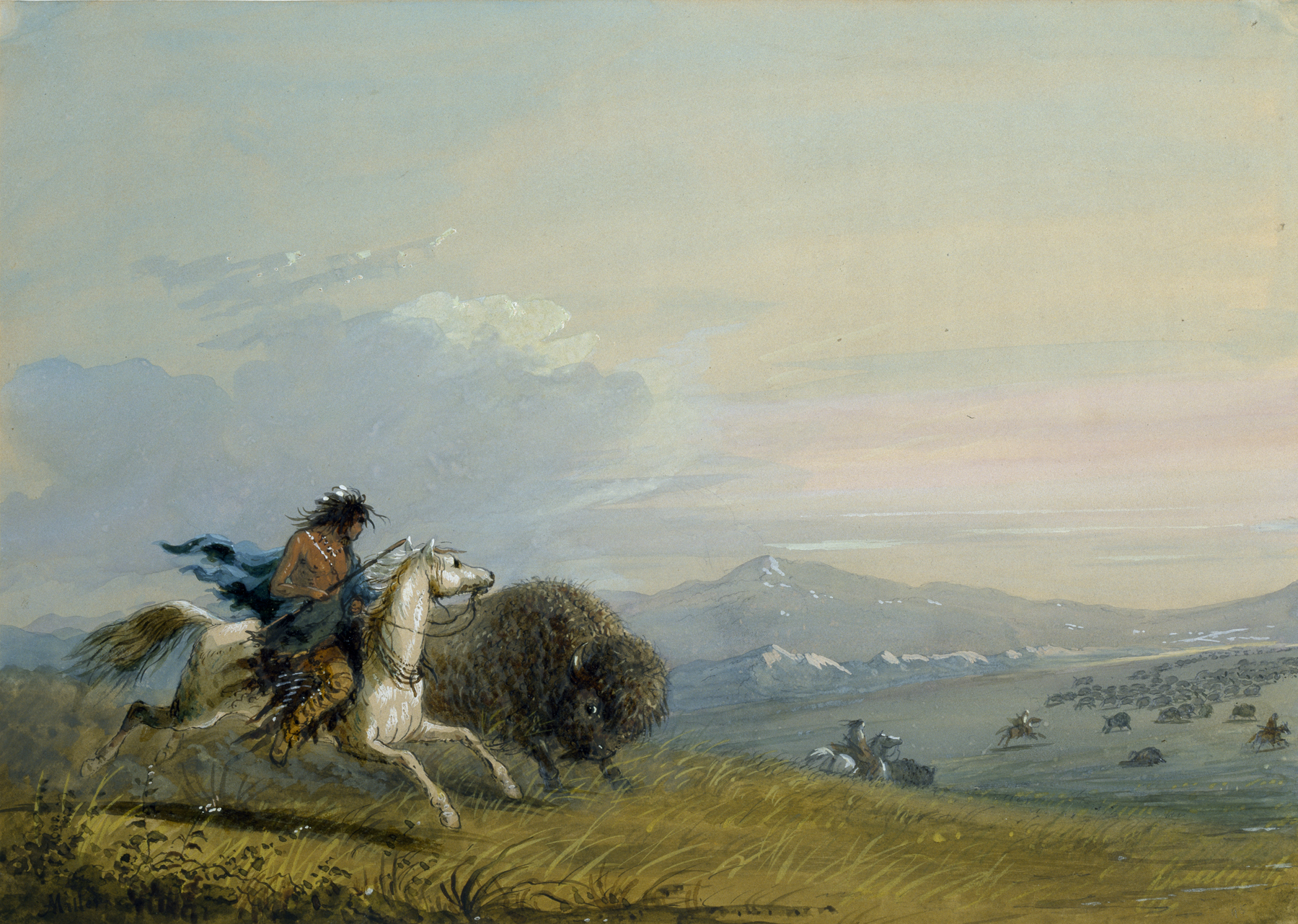Pawnee Running Buffalo
(18th and 19th Centuries )
Extracts from Alfred Jacob Miller’s original text, which accompanied his images of Native Americans, are included below for reference. These words, which shaped how Miller’s contemporaries viewed the watercolors, reveal the racism and sexism embedded in 19th-century exploration and colonization of the western part of what is today the United States.
"The hunter has singled out and disengaged from the main body of the Buffalo his reference, and is now running, and about to shoot him. While others are in hot pursuit of the retreating band, on the rise of the hill,- these hills militate against the speed of the animal, as their great weight in front soon tires them down. The Pawnees are slaughtering them mainly for their furs. The robes they manufacture are for the market, and they show great skills and considerable taste comparatively in ornamenting them in colors. Women are chiefly engaged in tanning the inner side of the robes, and are adepts in giving softness and pliability to the skin:- the larger ones are generally prepared in halves and sewed together, very neatly at the centre. When ready they are packed in bundles of about a dozen, and conveyed to the Forts, or stations for trading, nearest to their camp." A.J. Miller, extracted from "The West of Alfred Jacob Miller" (1837).
In July 1858 William T. Walters commissioned 200 watercolors at twelve dollars apiece from Baltimore born artist Alfred Jacob Miller. These paintings were each accompanied by a descriptive text, and were delivered in installments over the next twenty-one months and ultimately were bound in three albums. Transcriptions of field-sketches drawn during the 1837 expedition that Miller had undertaken to the annual fur-trader's rendezvous in the Green River Valley (in what is now western Wyoming), these watercolors are a unique record of the closing years of the western fur trade.
Inscription
Provenance
Provenance (from the French provenir, 'to come from/forth') is the chronology of the ownership, custody, or location of a historical object. Learn more about provenance at the Walters.
William T. Walters, Baltimore, 1858-1860, by commission; Henry Walters, Baltimore, 1894, by inheritance; Walters Art Museum, 1931, by bequest.
Exhibitions
| 2006 | Alfred Jacob Miller and the Western Indians. The Walters Art Museum, Baltimore. |
Geographies
USA (Place of Origin)
Measurements
8 1/4 x 11 11/16 in. (21 x 29.7 cm)
Credit Line
Commissioned by William T. Walters, 1858-1860
Location in Museum
Not on view
Accession Number
In libraries, galleries, museums, and archives, an accession number is a unique identifier assigned to each object in the collection.
In libraries, galleries, museums, and archives, an accession number is a unique identifier assigned to each object in the collection.
37.1940.121





